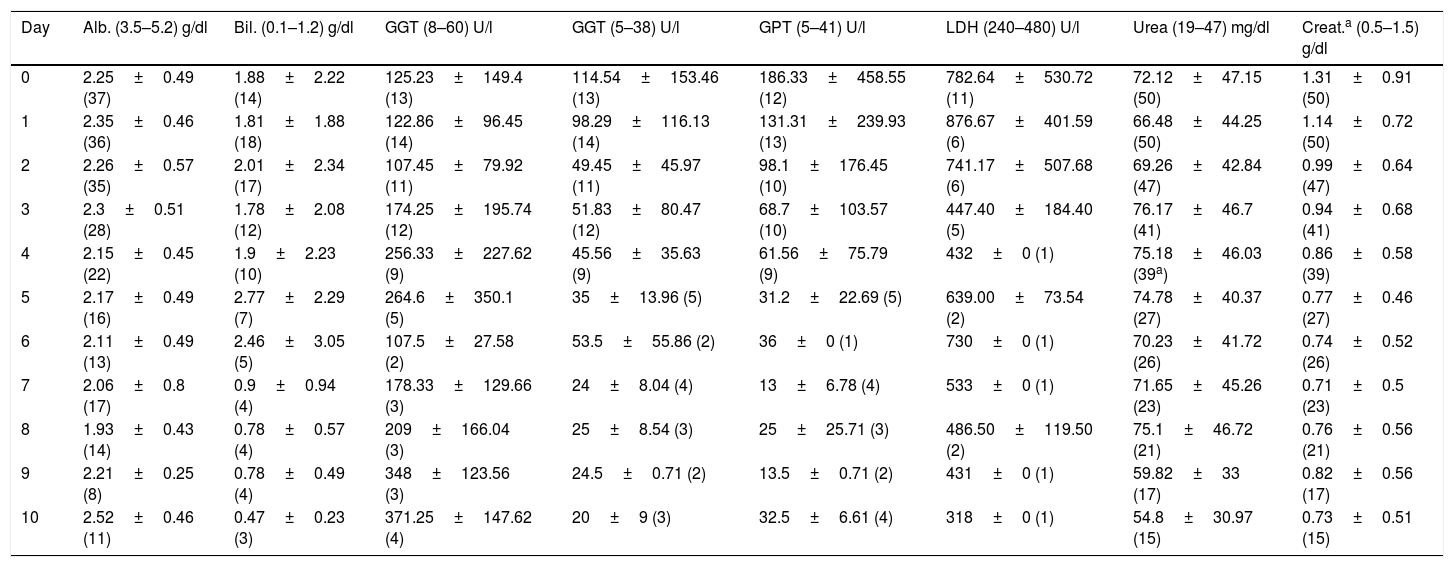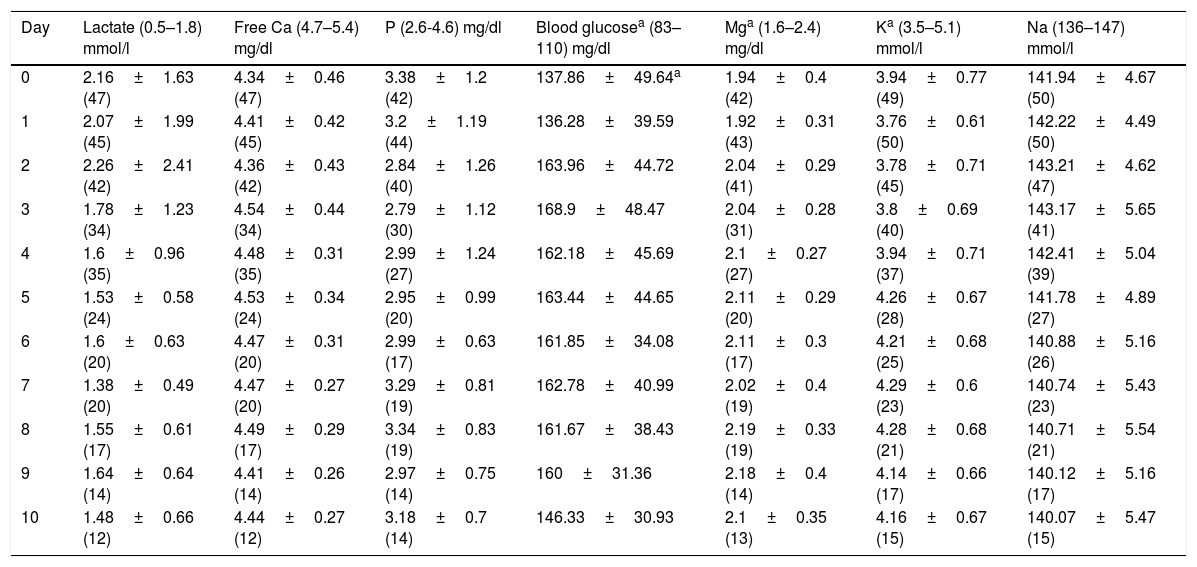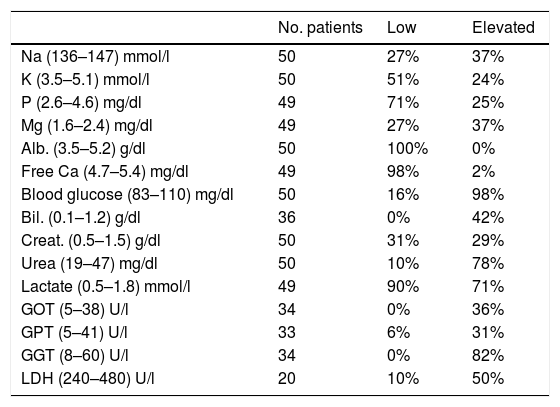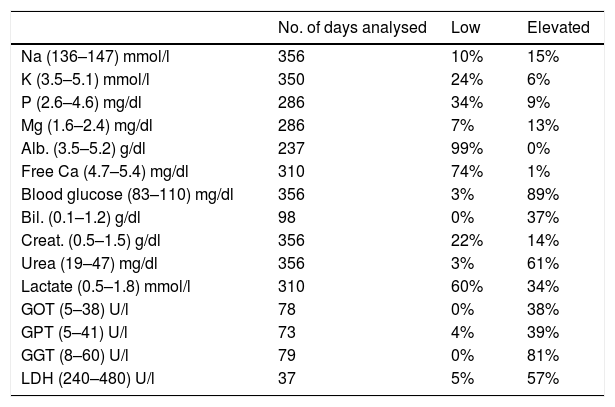Parenteral nutrition consists of the intravenous administration of macronutrients, micronutrients and electrolytes. Our objectives were to evaluate the biochemical alterations during the first ten days of initiation and to quantify the bacteremia related to the central venous catheter during the administration of parenteral nutrition.
Material and methodsRetrospective study of incidence and prevalence. We included 51 patients who started intravenous nutritional support therapy at Critical Care. We intend to know the infectious complications of the central line associated with parenteral nutrition, to evaluate the most frequent hydroelectrolytic complications of parenteral nutrition, and to identify minimum control points in the detection of hydroelectrolytic alterations.
ResultsStatistically significant daily variations were found for glucose, magnesium, potassium and creatinine, and bordering on the statistical significance for albumin and phosphate, the alterations occurring between the second and third days fundamentally. Hypoalbuminemia and hypocalcemia were very frequent. GGT was the liver enzyme that increased more frequently. The infection rate was 14.86 per 1000 days of central venous catheter.
ConclusionsWe found daily variations in glucose, potassium and magnesium, as well as a decrease in creatinine. We emphasize the frequency of hypoalbuminemia, hypocalcemia and elevation of GGT. The most important variations occurred between the second and third day, highlighting the precocity of potassium alteration and the peak of glycemia. The rate of infection related to the central venous catheter in patients with parenteral nutrition was high.
La nutrición parenteral consiste en la administración intravenosa de macronutrientes, micronutrientes y electrolitos. Nuestros objetivos fueron evaluar las alteraciones bioquímicas durante los diez primeros días de inicio y cuantificar las bacteriemias relacionadas con el catéter venoso central durante la administración de la nutrición parenteral.
Material y métodosEstudio retrospectivo de incidencia y de prevalencia. Se incluyeron 51 pacientes que iniciaron terapia de soporte nutricional intravenosa en la Unidad de Reanimación. Pretendemos conocer las complicaciones infecciosas de la vía central asociadas a nutrición parenteral, evaluar las complicaciones hidroelectrolíticas más frecuentes de la nutrición parenteral, e identificar puntos mínimos de control en la detección de las alteraciones hidroelectrolíticas.
ResultadosSe encontraron variaciones diarias estadísticamente significativas para la glucosa, magnesio, potasio y creatinina, y rozando la significación estadística para la albúmina y el fosfato, ocurriendo las alteraciones entre el segundo y tercer día fundamentalmente. La hipoalbuminemia y la hipocalcemia fueron muy frecuentes. La GGT fue la enzima hepática que se elevó con más frecuencia. La tasa de infección fue de 14,86 por cada 1.000 días de catéter venoso central.
ConclusionesEncontramos variaciones diarias en la glucosa, potasio y magnesio, así como también un descenso de creatinina. Destacamos la frecuencia de hipoalbuminemia, hipocalcemia y de elevación de GGT. Las variaciones más importantes ocurrieron entre el segundo y tercer día, destacando la precocidad de alteración del potasio y el pico de glucemia. La tasa de infección relacionada con el catéter venoso central en los pacientes con nutrición parenteral fue alta.
Artículo
Comprando el artículo el PDF del mismo podrá ser descargado
Precio 19,34 €
Comprar ahora











